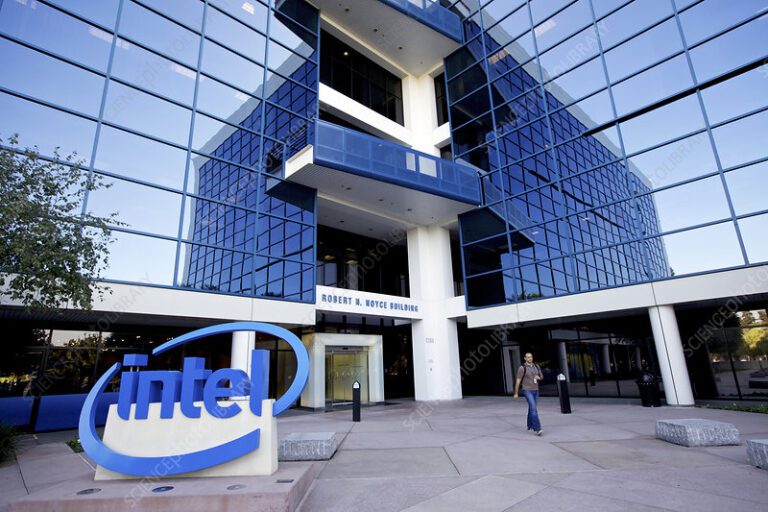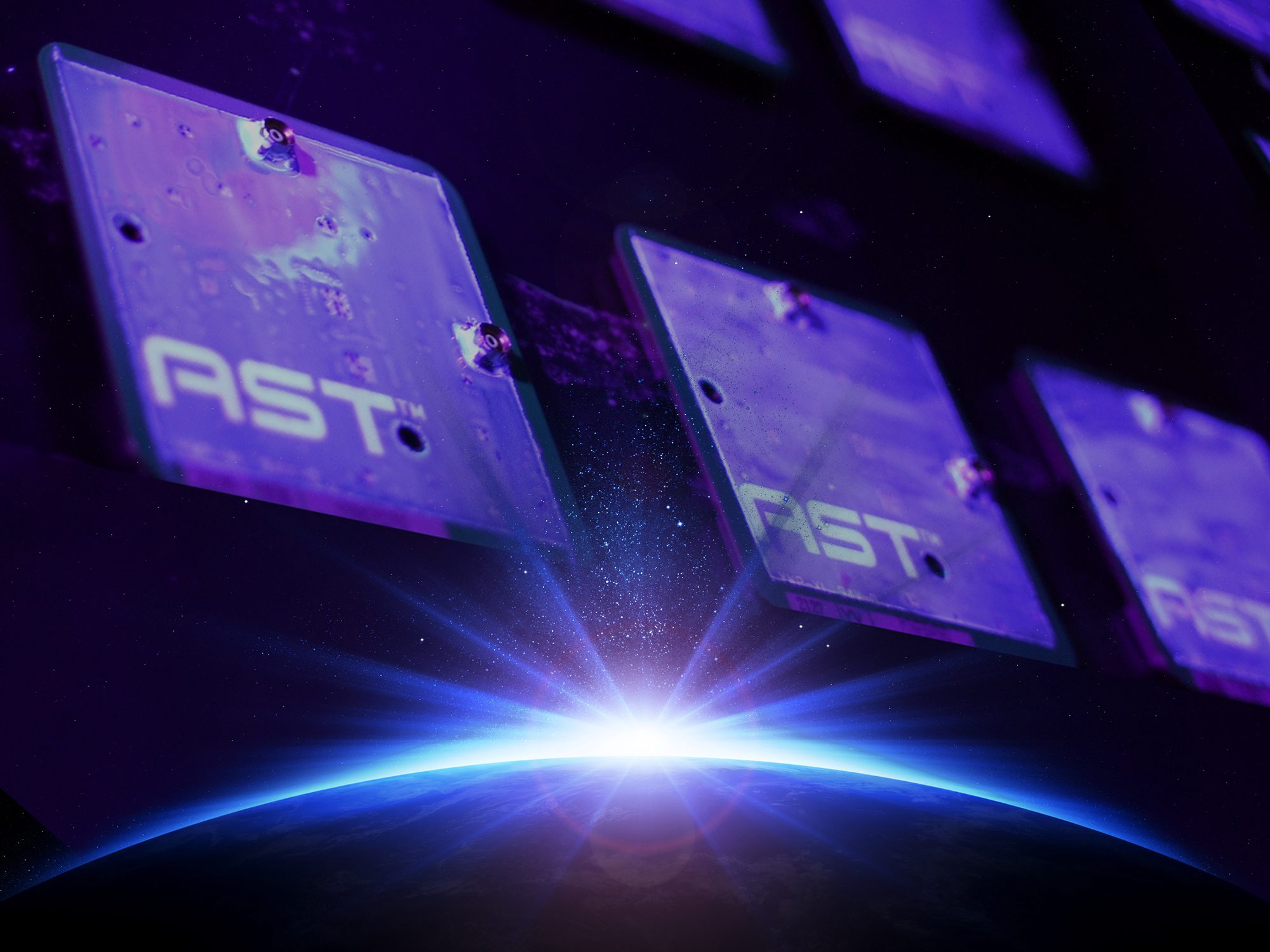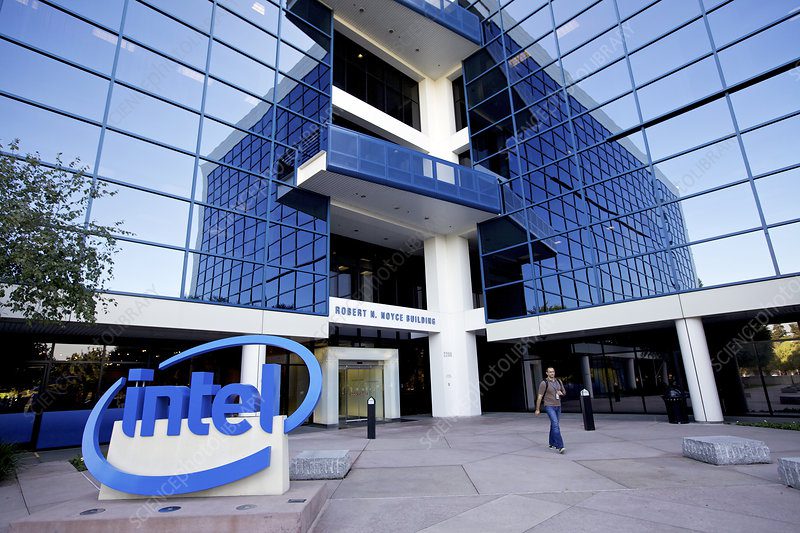
AST Spacemobile’s newest ASIC chip promises 10X the network capacity, 120 Mbps speeds — check out what it means for the company!

In the rapidly evolving landscape of telecommunications and space technology, the quest for truly global and seamless connectivity remains a paramount challenge. AST SpaceMobile, Inc. (NASDAQ: ASTS) stands at the forefront of this endeavor, pioneering the development of the world’s first and only space-based cellular broadband network designed to connect directly with standard, unmodified mobile devices. A critical innovation underpinning this ambitious vision is the AST5000 ASIC chip, a custom Application-Specific Integrated Circuit. This comprehensive article will delve into the latest developments surrounding the AST5000 chip, analyzing its key technical specifications and innovative features, its profound implications for the performance and scalability of SpaceMobile’s satellite network, and its potential to reshape the broader satellite communications industry, advance global connectivity, and solidify AST SpaceMobile’s market position. We will incorporate recent news updates, including today’s developments, and reference the most current and relevant sources to ensure accuracy and timeliness.
As of Thursday, June 12, 2025, AST SpaceMobile continues to make significant strides in realizing its vision. While specific new announcements directly related to the AST5000 chip’s technical specifications or an updated launch timeline might not have occurred today, ongoing progress in the company’s broader initiatives underscores the chip’s central importance.
Recent news highlights AST SpaceMobile’s secured long-term access to up to 45 MHz of lower mid-band spectrum in the United States, a critical development for enhancing its space-based cellular broadband network. This spectrum, combined with the low-band spectrum already planned for use across the continental U.S., aims to support peak data transmission speeds of up to 120 Mbps to smartphones. This substantial spectrum acquisition directly impacts the utility and required capabilities of the AST5000, as the chip must efficiently process and manage these frequencies to deliver on the promised broadband experience.
Furthermore, AST SpaceMobile announced in Q1 2025 their first Block 2 satellite (which is three times larger than Block 1 and boasts 10 GHz bandwidth) is set to ship in Q2 2025, with launches scheduled every 1-2 months starting July. These larger, more powerful satellites are explicitly designed to incorporate the AST5000 ASIC, highlighting the chip’s readiness and foundational role in the next generation of SpaceMobile’s constellation.
The AST5000 ASIC is a culmination of extensive research and development, representing an estimated 150 man-years of intensive work and approximately $45 million in development costs. Its tape-out phase, the final stage of design before manufacturing, commenced in March 2024 in collaboration with TSMC, a premier global semiconductor foundry, and Cadence Design Systems. This collaboration utilized Cadence’s advanced tools, flows, and IP, including high-speed SerDes, to achieve optimal power, performance, and area (PPA) for the System-on-Chip (SoC), ensuring high efficiency and functionality in the extreme conditions of space. The use of Cadence’s Palladium Emulation Platform during pre-silicon development was crucial for validating and refining IP integration, proactively addressing potential issues and guaranteeing the integrity of the final design.
Abel Avellan, Chairman and CEO of AST SpaceMobile, has consistently emphasized the AST5000 as the “heart of our Block 2 program,” signaling its critical role in unlocking the network’s full potential for global connectivity. This technological marvel is not merely an incremental improvement; it is poised to be a game-changer, addressing the immense challenge of providing direct-to-device cellular broadband from space.
The AST5000 ASIC is far more than just a chip; it’s a highly sophisticated, custom-designed piece of silicon engineered to meet the unique demands of a space-based cellular broadband network. Its innovative features are central to AST SpaceMobile’s ability to achieve its ambitious connectivity goals.
Designed specifically for the BlueBird Block 2 satellites, the AST5000 is a custom, low-power architecture. This is paramount for satellite operations, where power consumption is a critical constraint. Efficient power management directly translates to longer operational lifespans for satellites and reduced thermal dissipation requirements, simplifying satellite design and increasing reliability.
One of the most touted features of the AST5000 is its ability to enable up to a tenfold improvement in processing bandwidth per satellite. This is a monumental leap from the capabilities of previous generations. For context, while the BlueWalker 3 test satellite achieved 3 Bits/Hertz efficiency, and Block 1 BlueBird satellites planned for 40 MHz per beam to support 120 Mbps peak data rates, the AST5000-powered Block 2 satellites are expected to support up to 10,000 MHz of processing bandwidth per satellite. This translates to significantly higher data throughput and capacity for the entire network.
The collaboration with Cadence Design Systems leveraged their industry-leading IP, including high-speed SerDes (Serializer/Deserializer) technology. SerDes are crucial for high-speed data transmission within the chip and between different components, ensuring that the vast amounts of data processed by the ASIC can be moved efficiently. The integration of other foundational IP also contributes to optimal power and performance tradeoffs, allowing for efficient system designs tailored to the specific platform requirements of the BlueBird satellites, even across a broad industrial temperature range.
Cadence’s design enablement team focused extensively on optimizing the PPA for the AST5000 SoC. This multi-faceted optimization means the chip is not only powerful but also consumes minimal power for its given performance, and occupies a compact physical footprint. In space, where every gram and watt counts, PPA optimization is crucial for maximizing payload efficiency and minimizing launch costs.
The development process benefited from Cadence’s robust, high-performance, AI-driven Electronic Design Automation (EDA) tools. These tools provided a comprehensive solution spanning custom and digital design and verification, significantly accelerating the design cycle and ensuring the integrity and performance of the final silicon. The use of the Palladium Emulation Platform further allowed for pre-silicon validation, catching and resolving potential issues before costly manufacturing, a testament to the sophisticated engineering behind the chip.
Ultimately, the technical prowess of the AST5000 is designed to facilitate real-world impact. With its capabilities, AST SpaceMobile expects to deliver data transmission speeds of up to 120 Mbps directly to standard, unmodified smartphones. This includes enabling voice calls, full data streaming, and video applications, a capability that truly differentiates AST SpaceMobile from other satellite communication providers that often require specialized equipment.
The integration of the AST5000 ASIC chip is not merely an upgrade; it is a foundational pillar for the entire AST SpaceMobile network’s performance and scalability.
The tenfold improvement in processing bandwidth per satellite directly translates to a massive increase in the overall network capacity. This means each BlueBird Block 2 satellite can handle a significantly larger volume of data traffic and serve more users simultaneously. For a network aiming to connect billions of unconnected people and eliminate connectivity gaps, this increased capacity is non-negotiable.
Higher processing bandwidth allows for higher data throughput. This is critical for delivering the promised 120 Mbps peak data rates to individual smartphones. Such speeds are comparable to terrestrial broadband services, making it possible for users in remote or underserved areas to engage in data-intensive activities like video streaming, large file transfers, and video calls without significant lag or buffering. The chip’s efficiency also contributes to better signal processing, leading to improved service quality and reliability.
The advanced design and processing capabilities of the AST5000 contribute to improved spectral efficiency. This means the network can make more effective use of the allocated spectrum, maximizing the amount of data transmitted over a given frequency band. This is particularly important given the finite nature of radio spectrum resources and the company’s recent acquisition of substantial lower mid-band spectrum in the U.S.
The AST5000 is essential for the scalability of the BlueBird constellation. With increased processing power packed into each satellite, fewer satellites may be needed to cover a given geographical area or serve a certain number of users, at least for initial deployments. This optimizes the constellation size, potentially reducing overall deployment costs and operational complexities in the long run. The company aims to deploy 60 satellites by 2026, with a manufacturing cadence of six satellites per month by late 2025. The efficiency provided by the AST5000 chip is vital to making this ambitious production schedule viable and effective.
The chip’s robust architecture and high processing capabilities are designed to support current (4G/5G) and future cellular technologies. This ensures the network remains future-proof and can adapt to evolving telecommunications standards, allowing unmodified smartphones to seamlessly connect to the space-based network. This compatibility is a key differentiator for AST SpaceMobile.
The introduction of the AST5000 ASIC and the capabilities it enables could fundamentally alter the competitive dynamics and technological trajectory of the entire satellite communications industry.
AST SpaceMobile’s approach of direct-to-standard-device connectivity is unique. The AST5000 chip is the technological enabler of this capability at scale. If successful, it sets a new benchmark for what’s possible in the satellite communications industry, potentially forcing competitors to re-evaluate their strategies and invest heavily in similar direct-to-device technologies. This could accelerate the industry’s shift towards more user-friendly and accessible satellite services.
While AST SpaceMobile currently holds a “first-mover advantage” in direct-to-device cellular broadband, the success enabled by the AST5000 could spur intense competition. Established satellite operators and new entrants, including major players like SpaceX’s Starlink and Amazon’s Project Kuiper, may accelerate their own research and development into similar direct-to-phone capabilities, potentially leading to a wave of innovation across the sector.
The AST5000’s ability to support unmodified smartphones blurs the lines between terrestrial cellular networks and satellite communications. This convergence could lead to new business models, deeper partnerships between Mobile Network Operators (MNOs) and satellite companies, and the integration of satellite services as a seamless extension of existing cellular coverage, rather than a separate, niche solution.
The success of AST SpaceMobile’s high-performance ASIC could drive demand for more advanced, custom-designed semiconductor components tailored for space applications. This could foster growth and specialization within the aerospace and semiconductor industries, particularly for companies capable of designing chips for demanding space environments.
By demonstrating the viability of complex, high-capacity processing in space, the AST5000 contributes to the broader expansion of the “space economy.” It showcases that advanced computational power can be effectively deployed off-Earth, opening doors for other space-based applications beyond communication, such as in-orbit data processing, remote sensing, and even space-based AI.

The ultimate promise of AST SpaceMobile’s technology, powered by the AST5000 chip, lies in its potential to truly advance global connectivity and bridge the persistent digital divide.
Globally, nearly half the world’s population remains unconnected to the internet or lacks access to reliable broadband. This digital divide impacts education, healthcare, economic opportunity, and emergency services. By providing broadband connectivity directly to everyday smartphones, even in the most remote and rural areas, AST SpaceMobile aims to empower billions who are currently underserved. This is a monumental humanitarian and economic impact.
In disaster-stricken areas where terrestrial infrastructure is damaged or non-existent, a space-based cellular network provides a resilient communication lifeline. The AST5000’s ability to ensure high-speed, reliable connections in such scenarios is invaluable for search and rescue operations, relief coordination, and maintaining essential communication for affected populations. Government contracts with entities like the U.S. Space Development Agency further validate the dual-use nature and critical importance of this technology for public safety and national security.
Industries operating in remote areas, such as mining, agriculture, maritime, and aviation, heavily rely on connectivity. The AST5000-enabled network can provide reliable broadband to these sectors, facilitating everything from precision agriculture and remote asset monitoring to in-flight connectivity and maritime communications, significantly improving efficiency and safety.
Bringing broadband to previously unconnected regions can unlock significant economic opportunities. Access to information, online education, e-commerce, and digital financial services can stimulate local economies, create new jobs, and improve livelihoods. The AST5000, by enabling robust connectivity, is a key enabler of this economic empowerment.
The AST5000 ASIC chip is a strategic asset that significantly strengthens AST SpaceMobile’s market position and competitive advantage in the burgeoning satellite communications sector.
The AST5000 is central to AST SpaceMobile’s core USP: the ability to deliver broadband directly to unmodified smartphones. This eliminates the need for expensive, specialized ground equipment, a significant barrier to adoption for many satellite internet solutions. This unique capability provides AST SpaceMobile with a distinct advantage over competitors like Starlink, which primarily targets fixed locations or requires proprietary terminals.
The successful development and tape-out of the AST5000, involving advanced semiconductor design and AI-driven EDA tools, showcases AST SpaceMobile’s deep technological expertise and leadership. The company also boasts an extensive portfolio of over 3,100 patent and patent-pending claims, further cementing its innovative edge and creating significant barriers to entry for potential competitors. This intellectual property provides a protective moat around their groundbreaking technology.
The AST5000’s compatibility with standard cellular protocols facilitates deep integration with major mobile network operators (MNOs) worldwide. AST SpaceMobile has already secured partnerships with over 50 MNOs, including giants like AT&T, Verizon, and Vodafone, covering over 3 billion existing subscribers. These partnerships leverage existing customer bases and distribution channels, providing a massive commercialization advantage. The chip’s efficiency is key to delivering the reliable service these MNOs require to integrate satellite connectivity seamlessly into their offerings.
The tenfold increase in processing bandwidth per satellite provided by the AST5000 is crucial for scaling AST SpaceMobile’s commercial service. As more BlueBird Block 2 satellites are launched, the network’s capacity will rapidly expand, enabling the company to serve a larger subscriber base and generate significant revenue. The company’s internal manufacturing capabilities, bolstered by their state-of-the-art facilities, complement the chip’s efficiency in achieving mass production.
The technological breakthroughs enabled by the AST5000, combined with strategic partnerships and spectrum acquisitions, have fueled investor confidence in AST SpaceMobile. The company’s stock has seen significant surges, and analysts are increasingly bullish on its long-term potential, citing its unique technology as a key differentiator. The AST5000’s successful validation and integration into the Block 2 program provide tangible evidence of the company’s execution prowess, reducing perceived technical risks for investors.
The AST5000 ASIC chip is not merely a component; it is the technological nucleus of AST SpaceMobile’s audacious vision to deliver global cellular broadband from space directly to unmodified smartphones. Its groundbreaking features, including a tenfold increase in processing bandwidth and optimal power efficiency, are set to profoundly impact the performance and scalability of the BlueBird satellite network.
Looking ahead, the AST5000 promises to redefine the satellite communications industry, pushing the boundaries of direct-to-device connectivity and fostering deeper convergence with terrestrial networks. More importantly, it holds the potential to dramatically advance global connectivity, bridging the digital divide for billions and enabling critical communications in underserved and emergency areas. For AST SpaceMobile, the AST5000 chip solidifies its unique market position, showcasing unparalleled technological leadership, enhancing strategic partnerships, and providing the scalable foundation for its ambitious commercialization roadmap. As the BlueBird Block 2 satellites, powered by this innovative chip, begin their ascent, the future of global connectivity appears brighter and more accessible than ever before.

Trump administration takes historic $8.9 billion stake in Intel, acquiring 10% ownership amid bipartisan criticism and concerns over government intervention in private enterprise.

AppLovin posted record Q2 2025 results, with 77% revenue growth, higher margins, and a strategic shift toward core adtech platforms.

Discover how the Big Beautiful Bill reshapes taxes, healthcare, and national spending in 2025. Explore its impacts on personal finances, federal debt, and everyday life in this comprehensive analysis.
AST Spacemobile’s newest ASIC chip promises 10X the network capacity, 120 Mbps speeds — check out what it means for the company!

In the rapidly evolving landscape of telecommunications and space technology, the quest for truly global and seamless connectivity remains a paramount challenge. AST SpaceMobile, Inc. (NASDAQ: ASTS) stands at the forefront of this endeavor, pioneering the development of the world’s first and only space-based cellular broadband network designed to connect directly with standard, unmodified mobile devices. A critical innovation underpinning this ambitious vision is the AST5000 ASIC chip, a custom Application-Specific Integrated Circuit. This comprehensive article will delve into the latest developments surrounding the AST5000 chip, analyzing its key technical specifications and innovative features, its profound implications for the performance and scalability of SpaceMobile’s satellite network, and its potential to reshape the broader satellite communications industry, advance global connectivity, and solidify AST SpaceMobile’s market position. We will incorporate recent news updates, including today’s developments, and reference the most current and relevant sources to ensure accuracy and timeliness.
As of Thursday, June 12, 2025, AST SpaceMobile continues to make significant strides in realizing its vision. While specific new announcements directly related to the AST5000 chip’s technical specifications or an updated launch timeline might not have occurred today, ongoing progress in the company’s broader initiatives underscores the chip’s central importance.
Recent news highlights AST SpaceMobile’s secured long-term access to up to 45 MHz of lower mid-band spectrum in the United States, a critical development for enhancing its space-based cellular broadband network. This spectrum, combined with the low-band spectrum already planned for use across the continental U.S., aims to support peak data transmission speeds of up to 120 Mbps to smartphones. This substantial spectrum acquisition directly impacts the utility and required capabilities of the AST5000, as the chip must efficiently process and manage these frequencies to deliver on the promised broadband experience.
Furthermore, AST SpaceMobile announced in Q1 2025 their first Block 2 satellite (which is three times larger than Block 1 and boasts 10 GHz bandwidth) is set to ship in Q2 2025, with launches scheduled every 1-2 months starting July. These larger, more powerful satellites are explicitly designed to incorporate the AST5000 ASIC, highlighting the chip’s readiness and foundational role in the next generation of SpaceMobile’s constellation.
The AST5000 ASIC is a culmination of extensive research and development, representing an estimated 150 man-years of intensive work and approximately $45 million in development costs. Its tape-out phase, the final stage of design before manufacturing, commenced in March 2024 in collaboration with TSMC, a premier global semiconductor foundry, and Cadence Design Systems. This collaboration utilized Cadence’s advanced tools, flows, and IP, including high-speed SerDes, to achieve optimal power, performance, and area (PPA) for the System-on-Chip (SoC), ensuring high efficiency and functionality in the extreme conditions of space. The use of Cadence’s Palladium Emulation Platform during pre-silicon development was crucial for validating and refining IP integration, proactively addressing potential issues and guaranteeing the integrity of the final design.
Abel Avellan, Chairman and CEO of AST SpaceMobile, has consistently emphasized the AST5000 as the “heart of our Block 2 program,” signaling its critical role in unlocking the network’s full potential for global connectivity. This technological marvel is not merely an incremental improvement; it is poised to be a game-changer, addressing the immense challenge of providing direct-to-device cellular broadband from space.
The AST5000 ASIC is far more than just a chip; it’s a highly sophisticated, custom-designed piece of silicon engineered to meet the unique demands of a space-based cellular broadband network. Its innovative features are central to AST SpaceMobile’s ability to achieve its ambitious connectivity goals.
Designed specifically for the BlueBird Block 2 satellites, the AST5000 is a custom, low-power architecture. This is paramount for satellite operations, where power consumption is a critical constraint. Efficient power management directly translates to longer operational lifespans for satellites and reduced thermal dissipation requirements, simplifying satellite design and increasing reliability.
One of the most touted features of the AST5000 is its ability to enable up to a tenfold improvement in processing bandwidth per satellite. This is a monumental leap from the capabilities of previous generations. For context, while the BlueWalker 3 test satellite achieved 3 Bits/Hertz efficiency, and Block 1 BlueBird satellites planned for 40 MHz per beam to support 120 Mbps peak data rates, the AST5000-powered Block 2 satellites are expected to support up to 10,000 MHz of processing bandwidth per satellite. This translates to significantly higher data throughput and capacity for the entire network.
The collaboration with Cadence Design Systems leveraged their industry-leading IP, including high-speed SerDes (Serializer/Deserializer) technology. SerDes are crucial for high-speed data transmission within the chip and between different components, ensuring that the vast amounts of data processed by the ASIC can be moved efficiently. The integration of other foundational IP also contributes to optimal power and performance tradeoffs, allowing for efficient system designs tailored to the specific platform requirements of the BlueBird satellites, even across a broad industrial temperature range.
Cadence’s design enablement team focused extensively on optimizing the PPA for the AST5000 SoC. This multi-faceted optimization means the chip is not only powerful but also consumes minimal power for its given performance, and occupies a compact physical footprint. In space, where every gram and watt counts, PPA optimization is crucial for maximizing payload efficiency and minimizing launch costs.
The development process benefited from Cadence’s robust, high-performance, AI-driven Electronic Design Automation (EDA) tools. These tools provided a comprehensive solution spanning custom and digital design and verification, significantly accelerating the design cycle and ensuring the integrity and performance of the final silicon. The use of the Palladium Emulation Platform further allowed for pre-silicon validation, catching and resolving potential issues before costly manufacturing, a testament to the sophisticated engineering behind the chip.
Ultimately, the technical prowess of the AST5000 is designed to facilitate real-world impact. With its capabilities, AST SpaceMobile expects to deliver data transmission speeds of up to 120 Mbps directly to standard, unmodified smartphones. This includes enabling voice calls, full data streaming, and video applications, a capability that truly differentiates AST SpaceMobile from other satellite communication providers that often require specialized equipment.
The integration of the AST5000 ASIC chip is not merely an upgrade; it is a foundational pillar for the entire AST SpaceMobile network’s performance and scalability.
The tenfold improvement in processing bandwidth per satellite directly translates to a massive increase in the overall network capacity. This means each BlueBird Block 2 satellite can handle a significantly larger volume of data traffic and serve more users simultaneously. For a network aiming to connect billions of unconnected people and eliminate connectivity gaps, this increased capacity is non-negotiable.
Higher processing bandwidth allows for higher data throughput. This is critical for delivering the promised 120 Mbps peak data rates to individual smartphones. Such speeds are comparable to terrestrial broadband services, making it possible for users in remote or underserved areas to engage in data-intensive activities like video streaming, large file transfers, and video calls without significant lag or buffering. The chip’s efficiency also contributes to better signal processing, leading to improved service quality and reliability.
The advanced design and processing capabilities of the AST5000 contribute to improved spectral efficiency. This means the network can make more effective use of the allocated spectrum, maximizing the amount of data transmitted over a given frequency band. This is particularly important given the finite nature of radio spectrum resources and the company’s recent acquisition of substantial lower mid-band spectrum in the U.S.
The AST5000 is essential for the scalability of the BlueBird constellation. With increased processing power packed into each satellite, fewer satellites may be needed to cover a given geographical area or serve a certain number of users, at least for initial deployments. This optimizes the constellation size, potentially reducing overall deployment costs and operational complexities in the long run. The company aims to deploy 60 satellites by 2026, with a manufacturing cadence of six satellites per month by late 2025. The efficiency provided by the AST5000 chip is vital to making this ambitious production schedule viable and effective.
The chip’s robust architecture and high processing capabilities are designed to support current (4G/5G) and future cellular technologies. This ensures the network remains future-proof and can adapt to evolving telecommunications standards, allowing unmodified smartphones to seamlessly connect to the space-based network. This compatibility is a key differentiator for AST SpaceMobile.
The introduction of the AST5000 ASIC and the capabilities it enables could fundamentally alter the competitive dynamics and technological trajectory of the entire satellite communications industry.
AST SpaceMobile’s approach of direct-to-standard-device connectivity is unique. The AST5000 chip is the technological enabler of this capability at scale. If successful, it sets a new benchmark for what’s possible in the satellite communications industry, potentially forcing competitors to re-evaluate their strategies and invest heavily in similar direct-to-device technologies. This could accelerate the industry’s shift towards more user-friendly and accessible satellite services.
While AST SpaceMobile currently holds a “first-mover advantage” in direct-to-device cellular broadband, the success enabled by the AST5000 could spur intense competition. Established satellite operators and new entrants, including major players like SpaceX’s Starlink and Amazon’s Project Kuiper, may accelerate their own research and development into similar direct-to-phone capabilities, potentially leading to a wave of innovation across the sector.
The AST5000’s ability to support unmodified smartphones blurs the lines between terrestrial cellular networks and satellite communications. This convergence could lead to new business models, deeper partnerships between Mobile Network Operators (MNOs) and satellite companies, and the integration of satellite services as a seamless extension of existing cellular coverage, rather than a separate, niche solution.
The success of AST SpaceMobile’s high-performance ASIC could drive demand for more advanced, custom-designed semiconductor components tailored for space applications. This could foster growth and specialization within the aerospace and semiconductor industries, particularly for companies capable of designing chips for demanding space environments.
By demonstrating the viability of complex, high-capacity processing in space, the AST5000 contributes to the broader expansion of the “space economy.” It showcases that advanced computational power can be effectively deployed off-Earth, opening doors for other space-based applications beyond communication, such as in-orbit data processing, remote sensing, and even space-based AI.

The ultimate promise of AST SpaceMobile’s technology, powered by the AST5000 chip, lies in its potential to truly advance global connectivity and bridge the persistent digital divide.
Globally, nearly half the world’s population remains unconnected to the internet or lacks access to reliable broadband. This digital divide impacts education, healthcare, economic opportunity, and emergency services. By providing broadband connectivity directly to everyday smartphones, even in the most remote and rural areas, AST SpaceMobile aims to empower billions who are currently underserved. This is a monumental humanitarian and economic impact.
In disaster-stricken areas where terrestrial infrastructure is damaged or non-existent, a space-based cellular network provides a resilient communication lifeline. The AST5000’s ability to ensure high-speed, reliable connections in such scenarios is invaluable for search and rescue operations, relief coordination, and maintaining essential communication for affected populations. Government contracts with entities like the U.S. Space Development Agency further validate the dual-use nature and critical importance of this technology for public safety and national security.
Industries operating in remote areas, such as mining, agriculture, maritime, and aviation, heavily rely on connectivity. The AST5000-enabled network can provide reliable broadband to these sectors, facilitating everything from precision agriculture and remote asset monitoring to in-flight connectivity and maritime communications, significantly improving efficiency and safety.
Bringing broadband to previously unconnected regions can unlock significant economic opportunities. Access to information, online education, e-commerce, and digital financial services can stimulate local economies, create new jobs, and improve livelihoods. The AST5000, by enabling robust connectivity, is a key enabler of this economic empowerment.
The AST5000 ASIC chip is a strategic asset that significantly strengthens AST SpaceMobile’s market position and competitive advantage in the burgeoning satellite communications sector.
The AST5000 is central to AST SpaceMobile’s core USP: the ability to deliver broadband directly to unmodified smartphones. This eliminates the need for expensive, specialized ground equipment, a significant barrier to adoption for many satellite internet solutions. This unique capability provides AST SpaceMobile with a distinct advantage over competitors like Starlink, which primarily targets fixed locations or requires proprietary terminals.
The successful development and tape-out of the AST5000, involving advanced semiconductor design and AI-driven EDA tools, showcases AST SpaceMobile’s deep technological expertise and leadership. The company also boasts an extensive portfolio of over 3,100 patent and patent-pending claims, further cementing its innovative edge and creating significant barriers to entry for potential competitors. This intellectual property provides a protective moat around their groundbreaking technology.
The AST5000’s compatibility with standard cellular protocols facilitates deep integration with major mobile network operators (MNOs) worldwide. AST SpaceMobile has already secured partnerships with over 50 MNOs, including giants like AT&T, Verizon, and Vodafone, covering over 3 billion existing subscribers. These partnerships leverage existing customer bases and distribution channels, providing a massive commercialization advantage. The chip’s efficiency is key to delivering the reliable service these MNOs require to integrate satellite connectivity seamlessly into their offerings.
The tenfold increase in processing bandwidth per satellite provided by the AST5000 is crucial for scaling AST SpaceMobile’s commercial service. As more BlueBird Block 2 satellites are launched, the network’s capacity will rapidly expand, enabling the company to serve a larger subscriber base and generate significant revenue. The company’s internal manufacturing capabilities, bolstered by their state-of-the-art facilities, complement the chip’s efficiency in achieving mass production.
The technological breakthroughs enabled by the AST5000, combined with strategic partnerships and spectrum acquisitions, have fueled investor confidence in AST SpaceMobile. The company’s stock has seen significant surges, and analysts are increasingly bullish on its long-term potential, citing its unique technology as a key differentiator. The AST5000’s successful validation and integration into the Block 2 program provide tangible evidence of the company’s execution prowess, reducing perceived technical risks for investors.
The AST5000 ASIC chip is not merely a component; it is the technological nucleus of AST SpaceMobile’s audacious vision to deliver global cellular broadband from space directly to unmodified smartphones. Its groundbreaking features, including a tenfold increase in processing bandwidth and optimal power efficiency, are set to profoundly impact the performance and scalability of the BlueBird satellite network.
Looking ahead, the AST5000 promises to redefine the satellite communications industry, pushing the boundaries of direct-to-device connectivity and fostering deeper convergence with terrestrial networks. More importantly, it holds the potential to dramatically advance global connectivity, bridging the digital divide for billions and enabling critical communications in underserved and emergency areas. For AST SpaceMobile, the AST5000 chip solidifies its unique market position, showcasing unparalleled technological leadership, enhancing strategic partnerships, and providing the scalable foundation for its ambitious commercialization roadmap. As the BlueBird Block 2 satellites, powered by this innovative chip, begin their ascent, the future of global connectivity appears brighter and more accessible than ever before.

Trump administration takes historic $8.9 billion stake in Intel, acquiring 10% ownership amid bipartisan criticism and concerns over government intervention in private enterprise.

AppLovin posted record Q2 2025 results, with 77% revenue growth, higher margins, and a strategic shift toward core adtech platforms.

Discover how the Big Beautiful Bill reshapes taxes, healthcare, and national spending in 2025. Explore its impacts on personal finances, federal debt, and everyday life in this comprehensive analysis.

Figma’s S-1 filing reveals a company in hyper-growth, with revenue reaching $700 million, gearing up to IPO on the NYSE.
